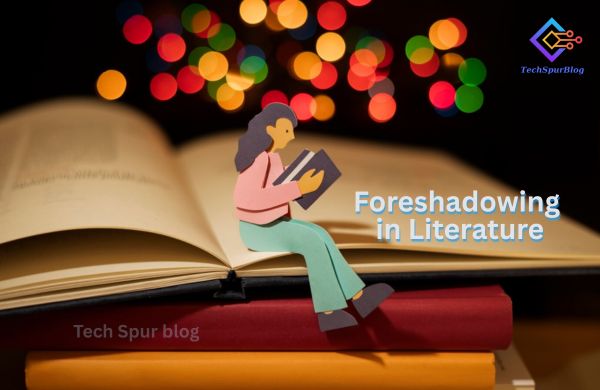
Foreshadowing is the storyteller’s quiet whisper. It plants small seeds early on then waits for them to bloom when the time is right. A glint of unease here a strange phrase there—these are the details that slip past on the first read but hit hard the second time around. The best authors use this technique with such a light touch it almost feels like magic.
It’s no surprise that readers switching from Open Library or Library Genesis often land on Z-library when they begin searching for timeless stories filled with layers like these. The shift towards more curated e-libraries mirrors the desire for richer reading experiences—ones that reward attention and stay with the reader long after the last page.
When a Hint Becomes a Storm
Take “Of Mice and Men” for instance. Early in the novel Lennie accidentally kills a mouse. It seems like a strange quirk at first maybe even a way to show his childlike mind. But Steinbeck isn’t just building character here. He’s drawing a roadmap to the tragic end. That mouse in Lennie’s pocket is a signpost blinking quietly in the background. It says this will not end gently.
In “Romeo and Juliet” Shakespeare packs the first act with talk of fate and ominous dreams. Romeo’s unease before the Capulet party isn’t teenage drama—it’s thunder before the rain. He speaks of a consequence hanging in the stars. That one line opens the door to everything that follows. Shakespeare was playing chess not checkers and every line has its weight.
Also Read: Learn How Upskilling is an Important Component of Career Growth
Symbols Wearing Disguises
In “The Great Gatsby” the blinking green light at the end of Daisy’s dock is often discussed for its symbolism but it also serves as a soft kind of foreshadowing. It calls Gatsby again and again promising what he can never truly reach. It isn’t just a detail—it is a warning.
In Toni Morrison’s “Beloved” there’s a moment when Sethe’s baby daughter dies unnamed and Morrison marks it with cold stillness. Later the character Beloved appears and everything turns uncanny. The early death wasn’t just backstory—it was the root of the haunting. Morrison doesn’t explain this outright. She lets the reader feel it unravel and that restraint makes the story hit harder.
Now and then authors leave breadcrumbs tucked inside the smallest moments. Sometimes they’re easy to miss until hindsight clicks them into place. Here are three sharp examples worth noting:
The Mockingbird’s Song in “To Kill a Mockingbird”
Atticus tells his children it is a sin to kill a mockingbird. At first it sounds like a simple moral lesson. But as the story unfolds the mockingbird becomes a quiet metaphor for Tom Robinson and Boo Radley. Both are innocent and both suffer for it. That early line becomes the book’s moral anchor. It casts a long shadow over every chapter that follows.
The Warning Dream in “Wuthering Heights”
Catherine has a dream where she is a child again locked out of heaven and crying to come back in. She shares it offhandedly with Nelly. What seems like idle talk becomes a lens for her restless spirit. Her dream becomes prophecy and her fate matches it beat for beat. Brontë doesn’t force the meaning—she lets it sit like a smouldering coal waiting to catch.
The Firestarter in “Jane Eyre”
Early in the story Grace Poole is blamed for strange happenings in the Thornfield attic. There are whispers of laughter and smoke but no direct answers. Readers follow the smoke until the fire breaks out literally and figuratively. What seemed like an odd subplot becomes the book’s turning point. Charlotte Brontë doesn’t shout—she nudges.
Each of these moments works because it avoids the obvious. The signs are there but they don’t light up in neon. They flicker just enough to create unease. That’s what makes them powerful.
Also Read: Unveiling the Rice Purity Test: A Journey to Self-Discovery
Quiet Threads in Epic Tales
In “The Lord of the Rings” Bilbo’s reluctance to part with the ring isn’t just stubbornness. It’s the first spark of something darker. The ring’s pull is subtle at first but its power grows. Tolkien laces this into the story early and revisits it in Frodo’s journey. The signs were always there but they only come into focus with time.
George Orwell does something similar in “Animal Farm.” At the start the pigs insist that all animals are equal. They write it on the barn wall. It feels hopeful almost noble. Then the words begin to shift. By the time they read “all animals are equal but some animals are more equal than others” the early promise curdles into warning.
When the Past Points Forward
Stories don’t have to wave red flags to make a point. Some of the strongest foreshadowing lies in family tales and legends within the story. In “One Hundred Years of Solitude” the Buendía family is haunted by repetition. Characters echo their ancestors in name and fate. The past isn’t just background—it is prophecy. Gabriel García Márquez uses this rhythm like a drumbeat guiding the reader toward the inevitable.
Foreshadowing doesn’t need to shout. It works best when it hums beneath the surface. Like footprints in fresh snow it shows where someone’s been and where someone’s going. Great writers use it to make their worlds feel alive and fated—so when the final chapter closes everything clicks into place.

Leave a Reply